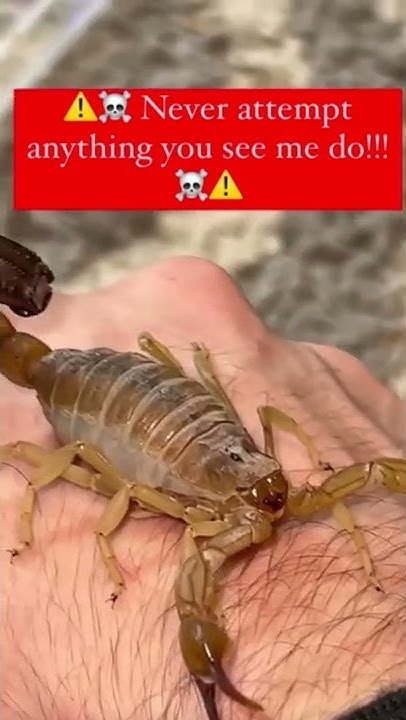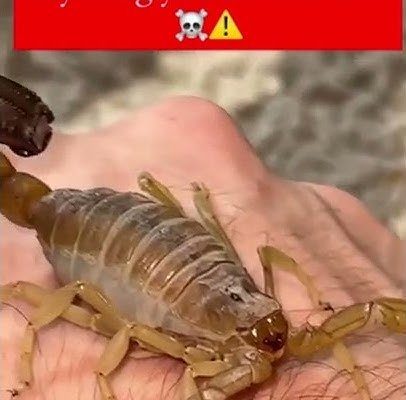
Imagine you’re sitting across from a friend who’s just shared their excitement about bringing home a fat-tailed scorpion. They ask, “How do I handle it without getting stung?” This is where the do’s and don’ts of handling these scorpions come into play. In this guide, we’ll delve deep into what to do and what to avoid to keep both you and your scorpion safe.
Understanding the Fat-Tailed Scorpion
The fat-tailed scorpion, largely found in Africa and parts of the Middle East, is famous for its striking looks and potent venom. These scorpions belong to the *Buthidae* family, which is known for containing some of the most dangerous species. Did you know that their venom can be lethal to small prey and even cause severe reactions in humans? This is one reason why handling fat-tailed scorpions safely is so important.
When discussing their anatomy, it’s easy to get fascinated. Their tail, thick and curved, is not just for show; it’s their weapon. Think of it as a built-in stun gun, packed and ready. With this in mind, anyone who wants to handle these critters needs to respect their power while learning how to interact safely.
Do’s of Handling the Fat-Tailed Scorpion
1. Always Use Proper Equipment
Before even thinking about picking up a fat-tailed scorpion, make sure you have the right tools. A pair of long forceps can be your best friend here. These allow you to grip the scorpion without getting too close to its sting zone.
When using forceps, here’s the thing: Hold onto the scorpion firmly but gently, aiming for the middle of its body. This creates a safety cushion between your fingers and its tail. Always be calm—scorpions can sense your nerves, which might make them more jumpy.
2. Choose a Comfortable Environment
Creating a stress-free space for both you and the scorpion is key. Always handle them in a controlled environment, like a secure container or a well-lit area where they can’t escape easily. Avoid loud noises and sudden movements. Imagine trying to talk to someone while a circus is going on around you—pretty distracting, right? Your scorpion deserves a peaceful setting.
Also, moisture is essential for their health. Make sure the environment isn’t too dry. A small water dish can help, and this way, they’ll feel more at ease, making handling less likely to end in a defensive sting.
Don’ts of Handling the Fat-Tailed Scorpion
1. Don’t Handle Without Understanding
It’s tempting to jump right into handling your fat-tailed scorpion, but don’t rush this step. Take time to learn their behavior. Scorpions can be unpredictable—one moment they might be still, and the next, they could dart away. Observe how they move and react to different stimuli. You might be wondering, “How do I get to know them?” Simple! Spend time watching them in their habitat before you attempt any handling.
Understanding when a scorpion feels threatened can save you from being stung. Signs of stress might include rapid tail movements or aggressive posturing. If you see these, it’s a clear signal to back off.
2. Don’t Use Your Hands
This might seem obvious, but you’d be surprised how many people think they’re tough enough to handle one bare-handed. Seriously, don’t. The venom can cause severe pain and medical emergencies. Think of it like playing with fire; it’s just not worth the risk.
Instead, always use tools when interacting with your fat-tailed scorpion. They’re not pets in the traditional sense, but rather unique creatures deserving your respect. Keeping a healthy distance with the right gear is a smart move.
Recognizing Stress Signals
Every creature has its own way of communicating discomfort or fear, and scorpions are no exception. When handling a fat-tailed scorpion, watch for specific signals:
1. Tail Position
If the tail is raised and curled above its back, it’s usually a sign that the scorpion feels threatened. It’s a bit like a cat arching its back before it swipes at you—not a good sign!
2. Rapid Movements
If your scorpion starts to move rapidly or tries to escape, it’s a clear indicator that it wants out of the situation. Back off and give it some space.
Recognizing these signals is essential for safe handling. Pay close attention, and you’ll find that your interactions are far more pleasant and stress-free.
Creating a Safe Habitat
Setting up the right environment for your fat-tailed scorpion is just as important as knowing how to handle it. Here’s how to get it right:
1. Temperature and Humidity
Fat-tailed scorpions thrive in warm, humid environments. Aim for temperatures between 80°F to 90°F during the day and provide slight humidity. You can achieve this with a heat mat under one part of the enclosure and a water dish to maintain moisture.
2. Enclosure Size
A properly sized enclosure is crucial. Choose a tank that offers enough space for your scorpion to move around but is not so large that it becomes difficult to manage. A 10-gallon tank is typically a good size for a single fat-tailed scorpion. Remember, they love to hide, so adding some substrate and small hiding spots can provide comfort.
Creating a cozy habitat not only benefits your scorpion but also helps make handling safer and easier.
Basic Care Tips for Your Fat-Tailed Scorpion
Caring for a fat-tailed scorpion goes beyond just handling. Here are some essential care tips:
1. Feeding
Feed your scorpion appropriately. They thrive on crickets, mealworms, and other insects. Make sure to provide them live prey and remove uneaten food to prevent any health issues. A hungry scorpion is more likely to be on the defensive.
2. Regular Clean-Up
Keep their habitat clean. Regularly remove waste and uneaten food, and change the water frequently. This not only keeps your scorpion healthy but also makes it easier to handle since a clean environment reduces stress.
By focusing on these care aspects, you’re setting yourself up for a rewarding experience with your scorpion.
Handling a fat-tailed scorpion safely can be a thrilling adventure, but it requires respect and knowledge. With the do’s and don’ts we’ve discussed, you can interact with these fascinating creatures without fear. Always remember to use the right tools, recognize stress signals, and provide a comfortable environment. This way, you ensure that both you and your scorpion can coexist without drama. As you embark on this journey, stay informed, be patient, and most importantly, enjoy the unique experience of keeping a fat-tailed scorpion. Your little desert warrior deserves it!

